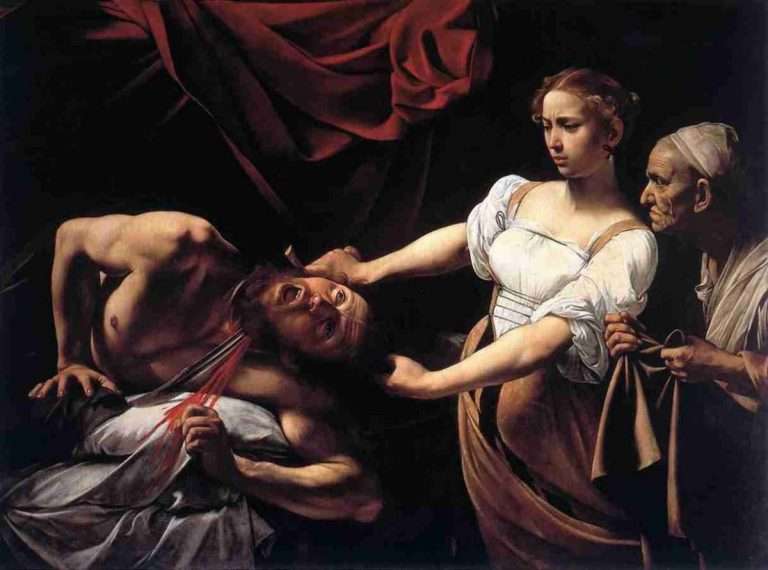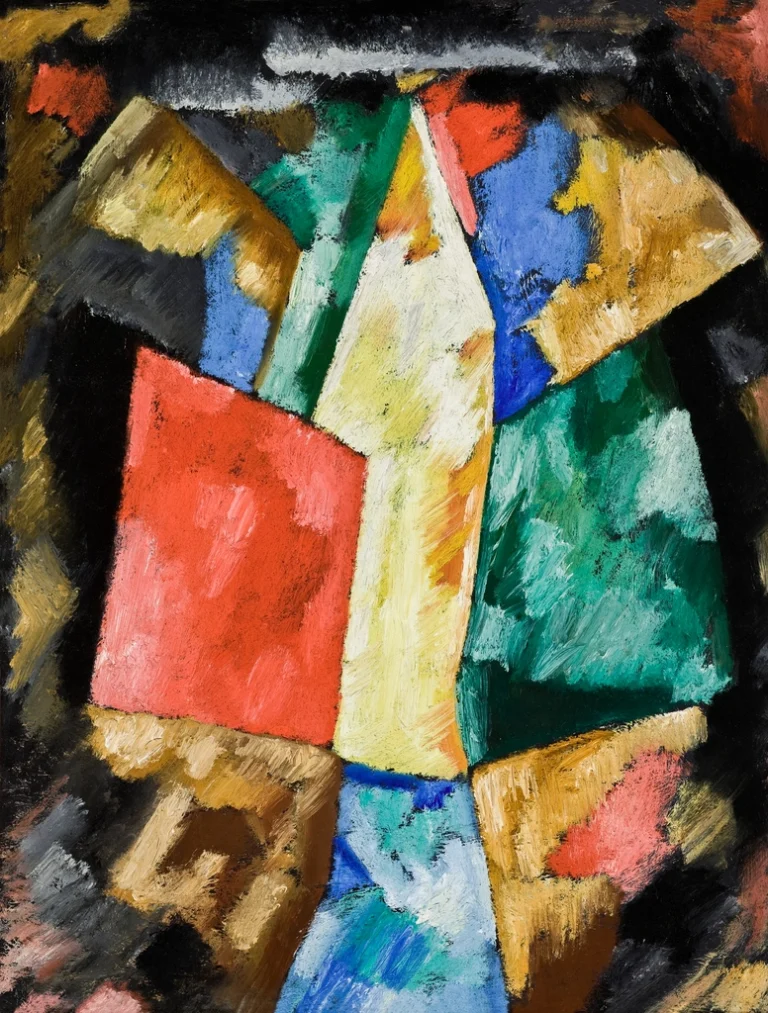
It was July, 64 AD, and Rome was ablaze. Not only was the summer sun beating down on the ancient city, but fire was raging. The Great Fire of Rome began on the Aventine Hill, spread the length of the Circus Maximus, and, according to Tacitus, damaged or totally destroyed homes and shops across 10 out of 14 districts.
From there, the story goes that Nero fiddled while the city burned (despite the fact that fiddles were yet to be invented). Ancient biographer Suetonius, who wrote scathingly about the emperor, said that Nero “watched the conflagration…enraptured by what he called ‘the beauty of the flames’…and sang The Sack of Illium from beginning to end.” Whether the fire was “accidental or treacherously contrived by the emperor,” explained Tacitus, “no one dared to stop the mischief, a number of persons…forbade the extinguishing of the flames.”
Following the Great Fire, Nero would go on to build an elaborate palace complex – the Domus Aurea, or Golden House – that stretched for hundreds of acres between the Palatine, Oppian, and Caelian hills. The 300-room villa was replete with gold leaf, stuccos, marble, frescoes, and mosaics made from ivory and gemstones. The estate had vineyards, orchards, an artificial lake, and pastures. All of this was punctuated by the construction of a colossus of Nero, a bronze statue of the emperor as God that rose more than 30 meters. The Domus Aurea was the definition of decadence.
Suetonius wrote his book The Twelve Caesars (De Vita Caesareum) nearly 60 years after the death of Nero. His portrait of Nero, which detailed the emperor’s crimes and extravagances, helped cement Nero’s reputation as a depraved despot for thousands of years to come. But it also described a vast estate that was for years lost to history due in part to damnatio memoriae, the Roman practice of condemning the public memory of particularly traitorous, unfit, or unpopular leaders.
The term damnatio memoriae is a modern Latin description of a common practice in Ancient Rome. “Use of the term suggests a monolithic way in which Romans could legally damn the memory of a disgraced or unpopular Roman emperor,” explains Dr. Sarah Bond, “when in fact there was no one term for such sanctions or even a fully systematized procedure for it. “
Canceling Nero
In the years after the Great Fire, many within Nero’s government and military ranks had grown tired of his extravagance, corruption, and despotic leadership. On 9 June 68 AD, Nero committed suicide rather than die at the hands of rebels who were coming to kill him.
A year of civil war, also known as the Year of Four Emperors, followed. During this time, four men from various positions within the empire ruled in succession, culminating in the ascension of Vespasian.
This was the beginning of the Flavian Dynasty, an era of nearly 30 years when the legacy of Nero – his laws and misdeeds – would be rewritten, reversed, or erased.

Though Nero’s name and questionable reputation live on today, the Flavian Dynasty did a good job of de-Nerofication. The Flavians most enduring legacy is the construction of the Flavian Amphitheater, known more commonly as the Colosseum. Vespasian had the amphitheater constructed over the site of Nero’s Domus Aurea estate, filling in the artificial lake and reclaiming the grounds for the public.
“Nero’s successors attempted to obliterate not only the emperor’s memory,” writes Federico Gurgone, “but also all traces of the Domus Aurea, and to return to public use, land he had seized for his private projects.” Vespasian kept the giant Colossus, the bronze statue that eventually lent the Colosseum its name, but he rededicated it to Sol, the Roman god of the sun, and added a crown.
Subsequent rulers also did their part to condemn the public memory of Nero. Titus and Domitian, Vespasian’s sons and successors, built baths and other buildings over other parts of the Domus Aurea. Trajan, who ruled from 98 to 117 AD, also built baths over Nero’s former palace, filling chamber after chamber with dirt to support the hulking bathing structures. Trajan’s Baths were the first large-scale public bathing structures in Rome.
Damnatio Memoriae Beyond Nero
In the book SPQR: A History of Ancient Rome, Mary Beard explains:
The politics of regime change had a major influence on how each emperor went down in history, as imperial careers and characters were reinvented to serve the interests of those who followed them. The basic rule of Roman history is that those who were assassinated were demonised. Those who died in their beds, succeeded by a son and heir, natural or adopted, were praised as generous and avuncular characters, devoted to the success of Rome, who did not take themselves too seriously.
Mary Beard, SPQR: A History of Ancient Rome(403-404)
Winners write history – we all know that. But in addition to burying the construction projects of previous rulers, the Roman Senate, as well as vengeful emperors, could erase the memory of tyrants by other means, including replacing or reconfiguring heads on statues; melting down coins that featured a despot’s likeness; and scratching out names from public records (abolitio nominis). In some cases, even speaking the name of a damned emperor was punishable by death.
More than two dozen emperors were “canceled” in the wake of their tyrannical reigns. After Domitian (the final Flavian) was assassinated, the Senate condemned his name to oblivion. Pliny the Younger notes how “delightful it was, to smash to pieces those arrogant faces” on the statues of Domitian. Triumphal reliefs that Domitian had commissioned during his reign – the Cancelleria Reliefs, now in the Vatican Museums – were subsequently altered to feature Nerva’s face in place of his own.

Another infamous example of an emperor whose name was condemned to oblivion is Geta. He and his older brother Caracalla were co-emperors with their father Septimius Severus. But when their father died, in early 211 AD, the rival siblings were left to rule together. Before the end of the same year, Caracalla murdered Geta and set about erasing his little brother’s name from the public record.
Historians cite the Severan family portrait, known as the Severan Tondo, as one of the best visual pieces of evidence of damnatio memoriae. The ancient painting, now housed in the Altes Museum in Berlin, shows the family of four – Septimius, his wife Julia Domna, Caracalla, and Geta – with Geta’s face completely rubbed out.

In his famous book “The History of the Decline and Fall of the Roman Empire” historian Edward Gibbon explains that Caracalla probably condemned the memory of Geta due to remorse: “the repentance of Caracalla only prompted him to remove from the world whatever could remind him of his guilt, or recall the memory of his murdered brother.”
Existing examples in Italy of Geta’s condemnation can be found in Rome on the Arco degli Argentari, which has a blank space in place of a relief of Geta, and a marble inscription in the Museo Archeologico Nazionale di Cagliari on which the name of Geta has been chiseled out.


Damnatio Memoriae: Legacy and Lessons
In her article on the same subject, Sarah Bond asks:
“Can you ever fully expunge someone from the historical record?”
Though Romans made every effort to damn their rivals to oblivion, they could not completely erase the public’s memory. Some had been charmed by a certain ruler’s populist style or lavish lifestyle, or had benefitted from his largesse. Further, they could not control the actions of their successors, some of whom rehabilitated the names of emperors who had been condemned.
For example, Vitellius, who ruled for several months during the Year of Four Emperors, tried to use Nero’s continued popularity with the public to his advantage. Suetonius wrote, “to leave no doubt in anyone’s mind what model [Vitellius] chose for the government of the State, he made funerary offerings to Nero in the middle of the Campus Martius.”
Another reason why damnatio memoriae was unsuccessful was because the act of erasure, according to Lauren Hackworth Petersen, “called attention to itself.” The void was unavoidable. Consider a pedestal without its statue or a blank space on a marble relief.
Damnatio Memoriae has continued during modern times, ranging from de-Nazification in Germany to the more recent removal – by government decree or by public will – statues of Confederate soldiers or Christopher Columbus in the United States. Conversely, other monuments, such as those in Italy erected during the reign of Mussolini, continue to stand, with some arguing that “we do not need to erase our memory, albeit at times dramatic.”
So what can we learn from this?
On the one hand, damnatio memoriae can bring attention to a disgraced leader by drawing attention to the void. Like ignoring the proverbial elephant in the room. On the other hand, failing to remove statues and memorials to known tyrants gives sympathizers a place of pilgrimage.
Thankfully, in today’s world, history isn’t written only by the winners. We have educators and classicists who have many different sources from which they can construct a more accurate picture of the past. “History casts a long shadow,” argue Mati Davis and Sara Chopra. “But rather than obscuring our memory with darkness, its shade offers us an opportunity to face our own past and take thoughtful action in our present.”
Resources
I used the following resources to research this article. If you wish to learn more, visit the links below.
- The Annals by Tacitus
- The Twelve Caesars by Suetonius
- 69 A.D.: The Year of Four Emperors by Gwyn Morgan
- SPQR: A History of Ancient Rome by Mary Beard
- Cambridge Companion to the Age of Nero by Shadi Bartsch
- The History of the Decline and Fall of the Roman Empire by Edward Gibbon
- Mutilation and Transformation: Damnatio Memoriae and Roman Imperial Portraiture by Eric R. Varner
- The Art of Forgetting: Disgrace and Oblivion in Roman Political Culture by Harriet I. Flower
- How Do You Purge the Memory of an Emperor? by Dr. Sarah Bond for Forbes
- Golden House of an Emperor by Francesco Gurgone for Archaeology
- Nero, History’s Most Despised Emperor, Gets a Makeover by Joshua Levine for Smithsonian Magazine
- Damnatio Memoriae: On Facing, Not Forgetting the Past by Mati Davis and Sara Chopra for Discentes
- The Presence of “Damnatio Memoriae” in Roman Art by Lauren Hackworth Petersen
- Damnatio Memoriae: Roman Sanctions Against Memory by Dr. Francesca Tronchin (Khan Academy)
- Damnatio Memoriae on Livius.org
Post first published on November 20, 2020






